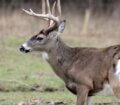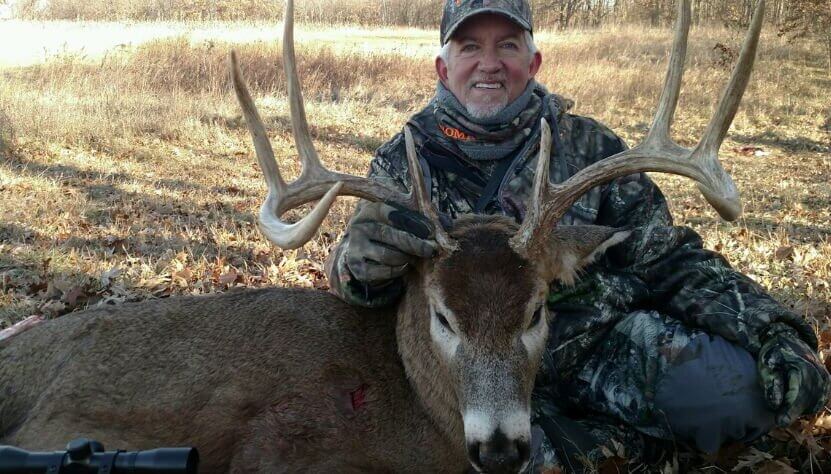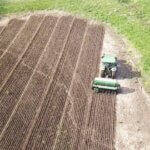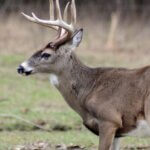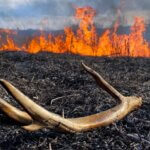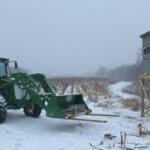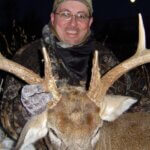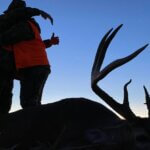Editor’s Note: Terry and Mark Drury have owned Drury Outdoors for the last almost 35 years, and today produce and direct several TV shows, including “Thirteen,” “Natural Born,” “Bow Madness” and “Critical Mass: Evolve.” They’ve consistently been able to take older-age-class bucks every year on the properties they own and manage for wildlife. Terry Drury shares their deer strategies. Also many states offer free assistance through biologists in the states’ Technical Assistance Units about improving properties for deer.
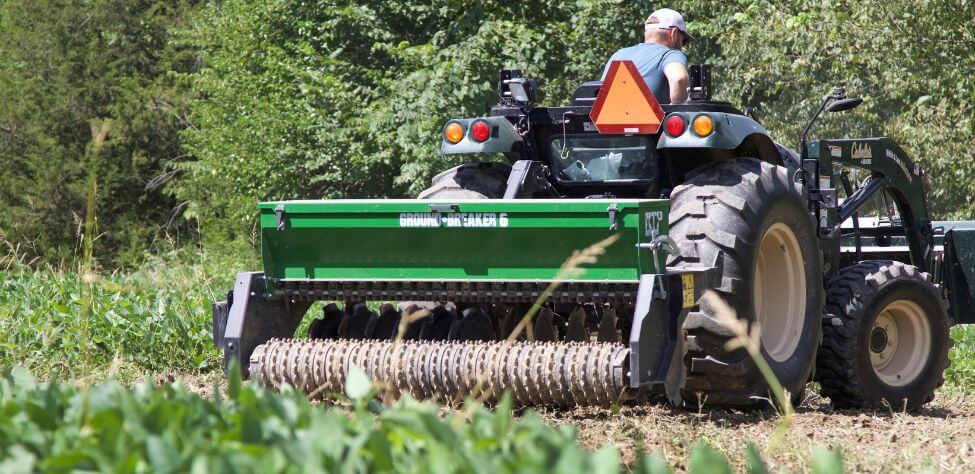
Mark and I both lease properties and buy and sell land, so I can’t tell you how much land he has to hunt, but I have 1200 acres in one large chunk of land. Then I lease 450 acres here in Missouri and lease another 240 acres. In Illinois, Mark and I have 1,850 acres in one contiguous piece that we lease.
Another question I’m often asked is, “How many bucks 6.5 years old or older do you think you have on all the land you either lease or own?” Before we go there, remember that in 2018, our region had a severe case of CWD (chronic wasting disease) that really hurt the number of bucks we had on our properties. Watching our bucks on all of our properties and being careful to pass up numbers of bucks to let them grow and allow the herd to recover from CWD has been critical.
Realizing that white-tailed bucks seem to have peak years and down years is very important. One year your land may have a big number of older age-class-bucks that you’re getting photos of on trail cameras. Then the next year, you may not have nearly as many bucks as you’ve thought you should have. Mature white-tailed bucks, seem to come into and move out of your life. By that I mean, you may have been watching a buck that’s 6.5 years old or older. Then you decide to take him the next hunting season, but he vanishes. You don’t know whether he’s been harvested by another hunter, if he’s been killed in a fight with other bucks, or if he’s gotten some-other physical challenges that’s caused him not to survive during the year you’ve planned to take him.
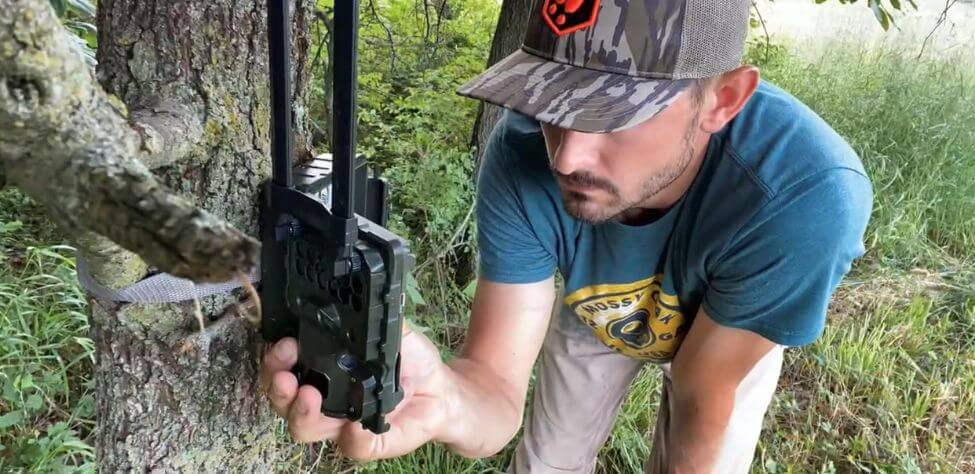
Also perhaps another buck in that area has moved in and become more dominant than the buck you’ve hoped to take. That other buck may have a smaller rack and even a smaller body weight but is just mean and has run the buck you’ve been hoping to take out of that region. Or, you may have three or four older-age-class bucks on a piece of property. Then the next year they’re all gone, and the land will home a whole crop of new bucks or younger bucks you’ve never seen before, moving into the older-age-classes. So, there are many, many factors influencing how many older-age-class bucks you’ll have on your land.
On both the 1200 acres that I own and the 1800 acres that I lease, both properties typically will have about the same number of older-age-class bucks on them. Now, I will say too that in Illinois, even though I have 1800 acres leased, quite a bit of that is tillable and is farmed. So, the amount of land that I really have to hunt there is much smaller than the 1800 acres.
Tomorrow: How to Retain Older Buck Deer

How to Hunt and Take Big Buck Deer on Small Properties
In this book, you’ll hear from 14 hunters who either have gained permission or leased properties as small as six acres to as much as 250 acres, and how they consistently take older-age-class bucks off these little lands.
VERSIONS: AUDIBLE, KINDLE & PRINT

Jim Crumley’s Secrets of Bowhunting Deer
Using a black magic marker and a gray work jumpsuit, Jim Crumley of Buchanan, Virginia, drastically changed the nature and purpose of hunting camouflage when he created the first sportsman’s camouflage – Trebark. Crumley’s love of bowhunting and his desire to be more invisible changed hunting clothing forever.
In this hunting guide, he shares the wisdom that he’s learned throughout his lifetime about how to be a hunter, how to find a deer lease, how to scout for deer, and more.
Special features include how to:
- Have a magic 60 acres to hunt
- Decide the best equipment to use
- Find deer year-round
- Locate land to hunt
- Know the best place to put your tree stand
- Get bucks within bow range
VERSIONS: AUDIBLE, KINDLE & PRINT

How to Hunt Deer Like a Pro
How do you know if the land you hunt has a trophy deer on it? Wildlife manager Bob Zaiglin, of Uvalde, Texas and Jim Crumley, the father of modern-day hunting camouflage, tells you how to find out. GPS can make finding and taking that trophy buck easier. This hunting guide will teach you how to hunt big bucks where no one else can find them, how to call deer, and how to become versatile as a deer hunter, so that if one deer tactic doesn’t work, another one will.
In the chapter, “How to find Bucks at Scrape,” Dr. Keith Causey, retired professor of Wildlife Science at Auburn University, describes the best way to hunt a scrape.
Brad Harrison of Neosho, Missouri, is a nationally-known videographer, professional deer hunter and master at calling deer. Another master is Will Primos of Primos Game Calls. These two experts will tell the best deer calls and when to use them in this book.
And for over 20 years, Bo Pitman, lodge manager of White Oak Plantation, has been studying deer movement patterns. He explains what types of conditions are best for predicting deer movement.
VERSIONS: AUDIBLE, KINDLE & PRINT

Deer hunting and deer hunters are drastically changing each year. To learn new techniques for hunting deer and have more places to hunt, I’ve interviewed some of the best deer hunters in the nation and share their tactics in How to Hunt Deer Like a Pro: Volume II.
In Chapter 10, Jacob Lamar tells you his tactics for consistently taking older-age-class bucks on public lands in several states. Chapter 11, Bob Walker explains how to find places on public lands where you can hunt that 99 percent of the other hunters never have considered hunting. The Bonus Chapter with David Ramey tells you how, where, when and with what equipment to take big Kansas bucks on public lands by hunting in 100-degree weather when others won’t hunt.
Chapter 13, Mark Drury, his family and his guests take mature bucks every season by having more small places to hunt rather than one large property. Drury explains the strategy of having satellite farms to hunt that only may be 50-150 acres each or less. Chapter 15, Pat Reeve, who hunts far-northern states and Canada, says, “I don’t like hunting for mature bucks until the weather is 20 degrees or less.” Chapter 4, Dr. Larry Marchinton says that funnels are the most-reliable stand sites to hunt for big bucks and tells why.
VERSIONS: AUDIBLE & PRINT

